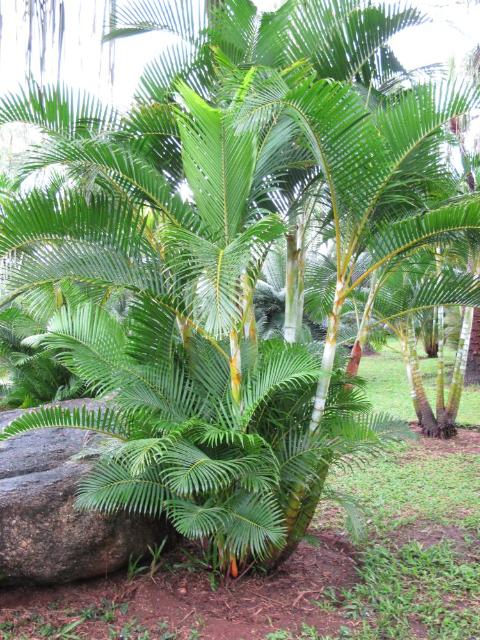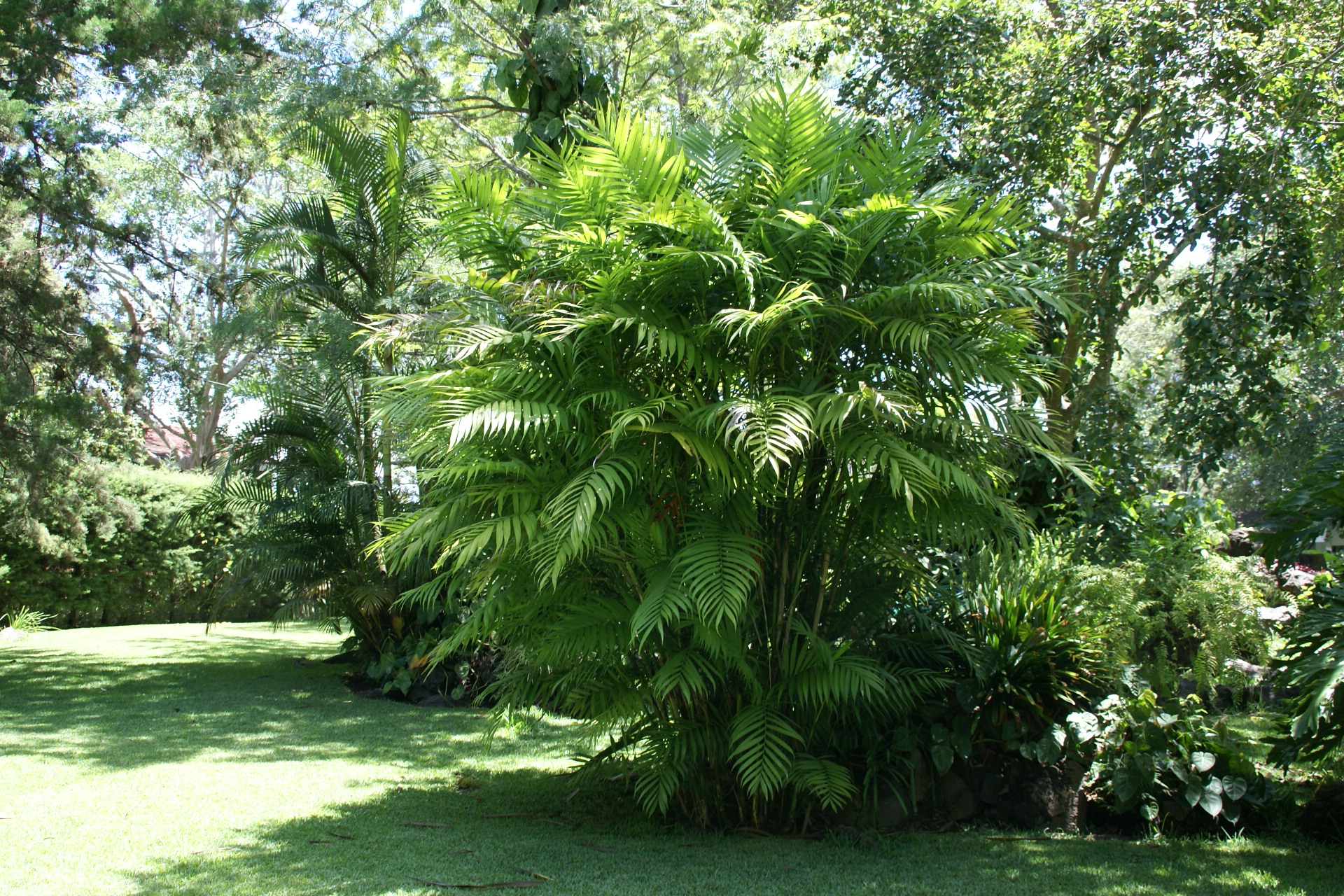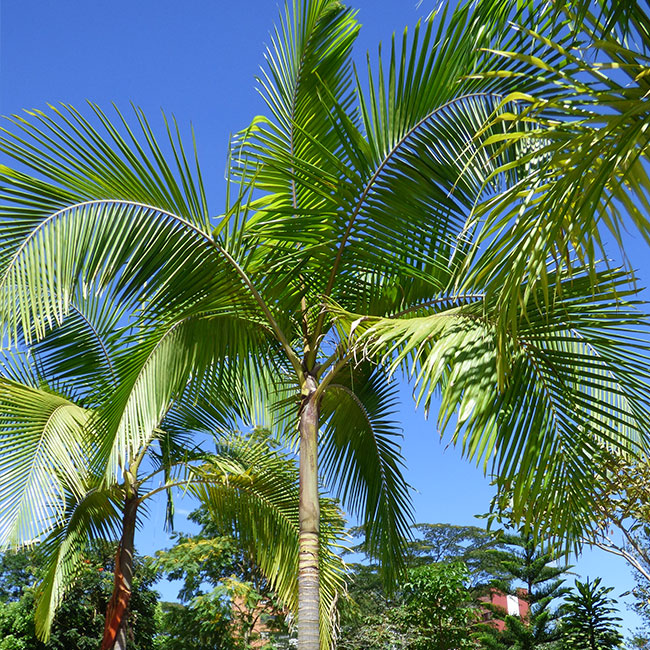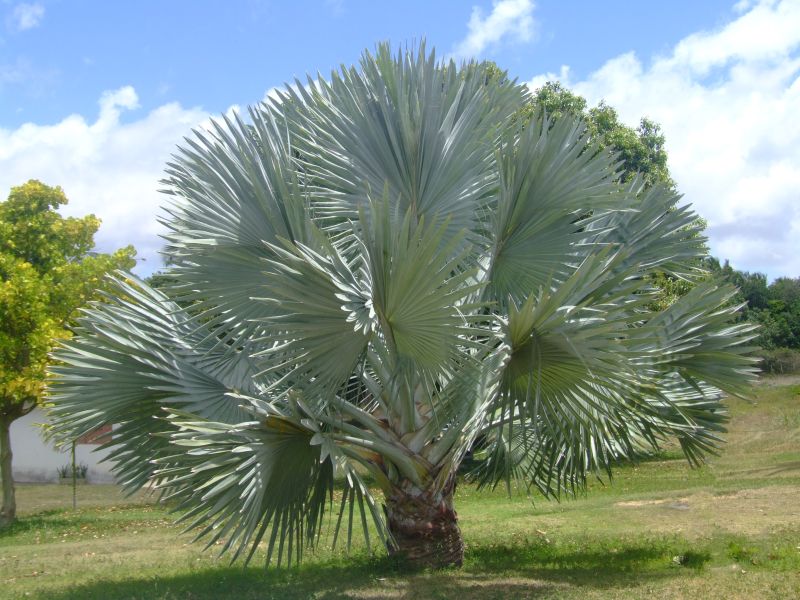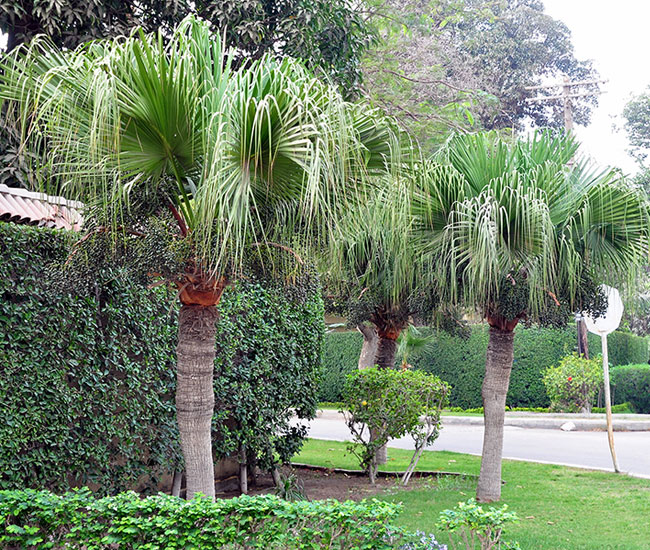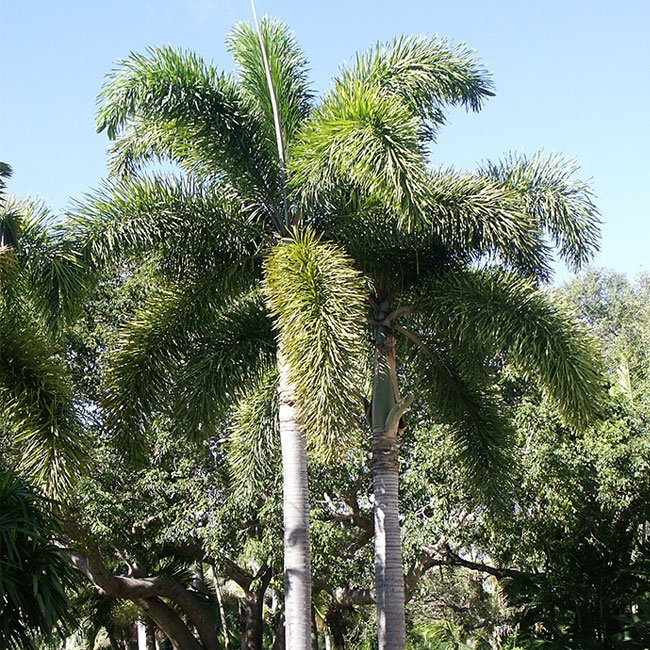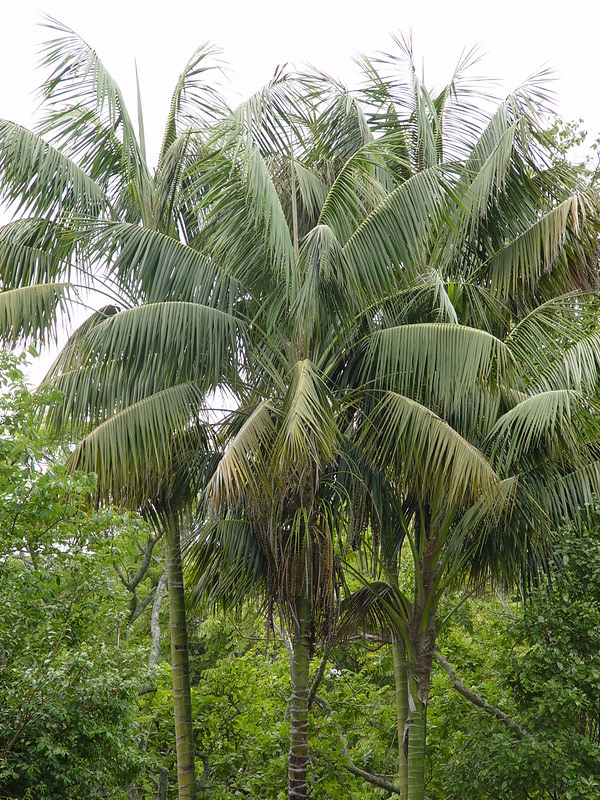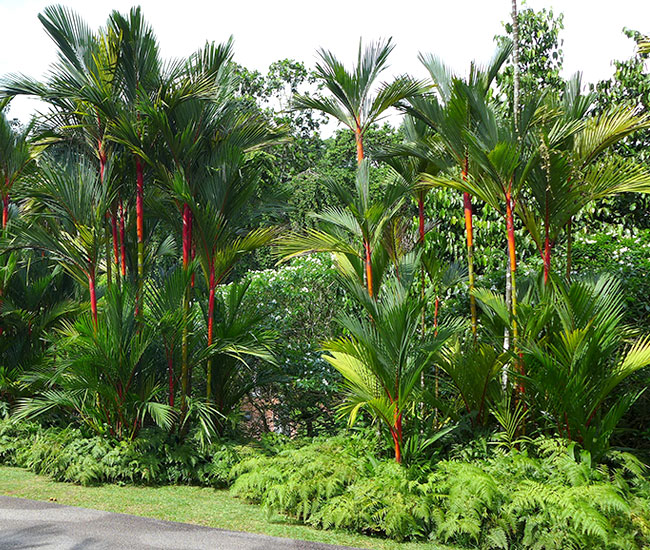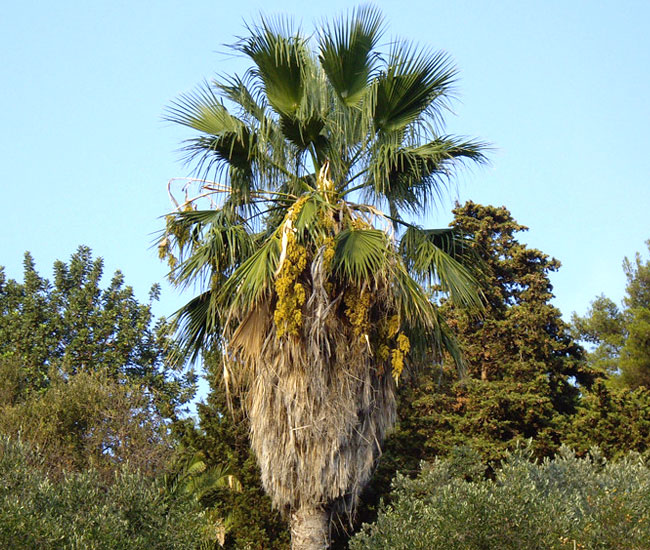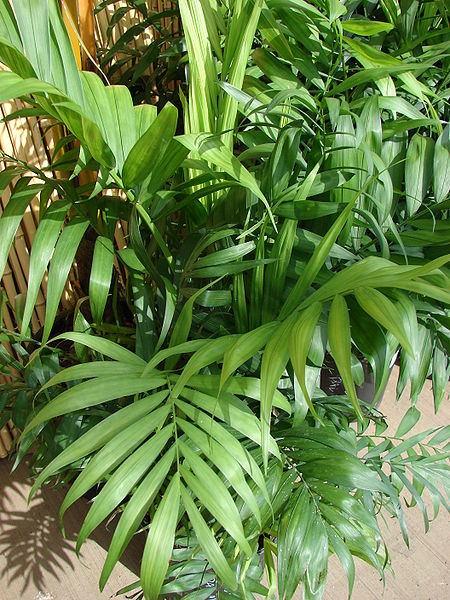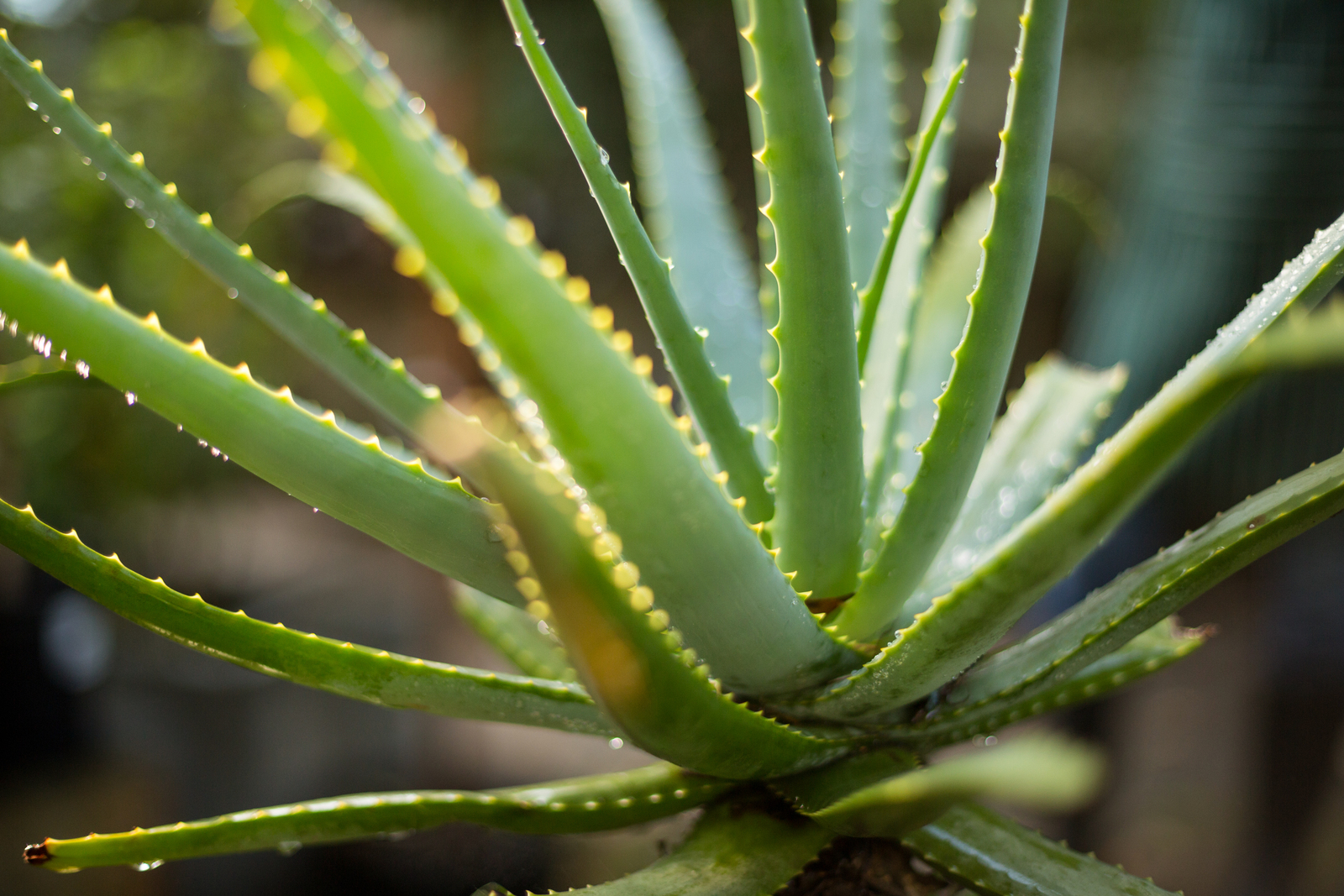Palm Tree Species – A Variety of Shapes and Sizes
Palm tree species are available in a large assortment of colors, shapes, and sizes. They are the perfect choice for adding tropical color, texture, and style to your interior décor, as well as your outdoor landscape design. Some palm tree species will be better suited than others, depending on your climate and design requirements. Making the right choice will ensure your palms thrive and prosper.
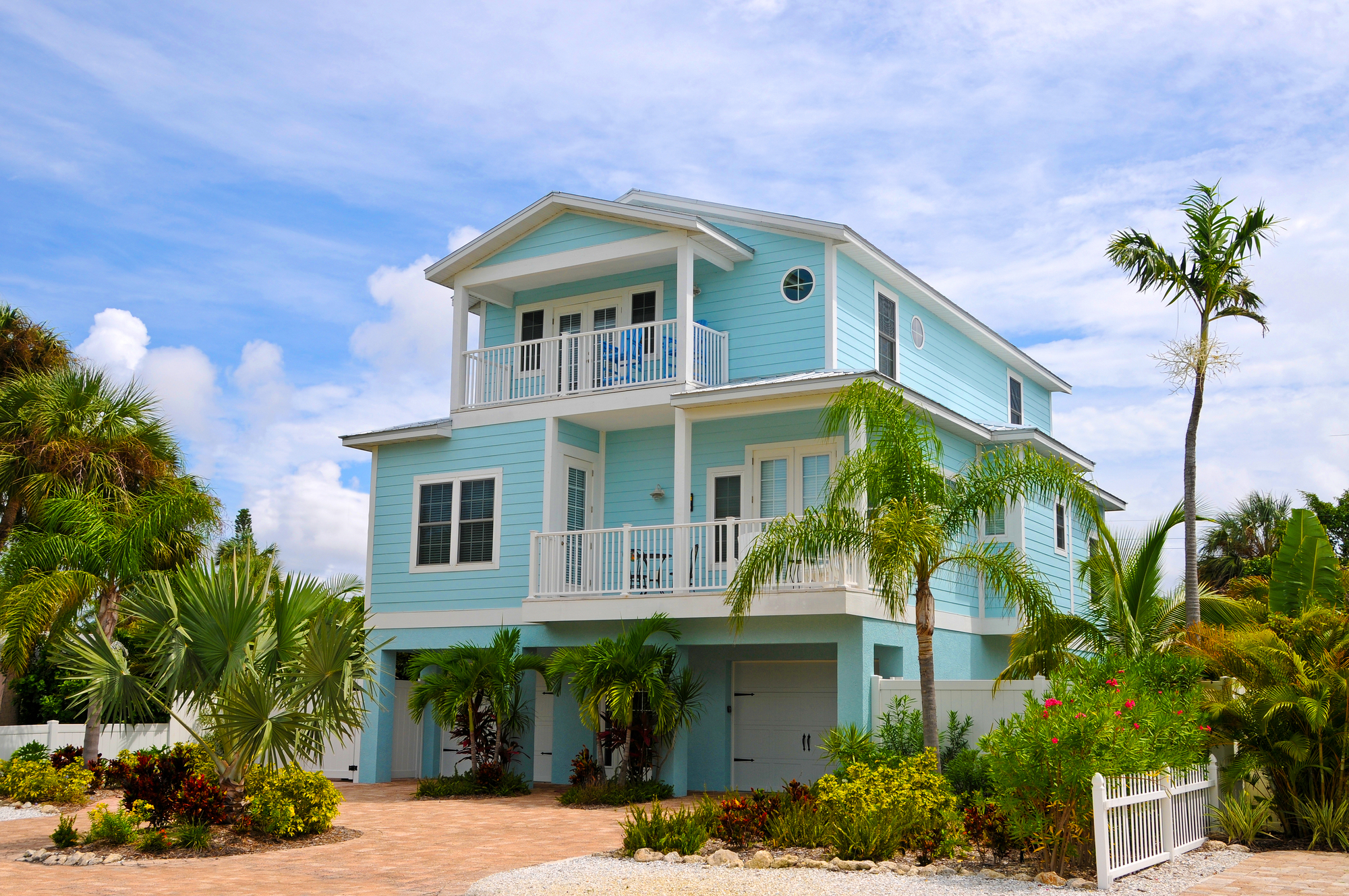
Tips for Selecting the Best Palm Tree Species
Plant requirements should match the conditions in your home or landscape. The most important requirement for palm trees planted in the landscape is climate. Be sure the palm is suited to the climate of the hardiness zone you live in. For indoor palms, it is important to accommodate lighting, temperature, and humidity requirements.
- Your lifestyle should allow for proper palm tree care. If your palm requires a lot of watering, you, or someone trustworthy will need to check the soil often.
- For indoor palms, consider a silk palm tree if you want the tropical look without the maintenance requirements.
- Palm tree species come in a variety of sizes and styles – from small and elegant to big and bold. Be sure to choose a size and style that complements your interior décor or landscape design.
- Palms should look sturdy, clean, and healthy. If you are buying a palm tree from a nursery or garden center, check the tree for unhealthy signs including yellow leaves, wilted foliage, and spindly growth. Thoroughly check plants for signs of insects and disease.
- Consider buying palm trees online. You have access to multiple suppliers that offer a large selection of palms. Local nurseries and garden centers can only afford to stock a limited amount of choices during specific times of the year (usually spring and summer).
Palm Tree Species – What are Your Options?
There are a variety of palms available that are suitable for your home, office, or landscape. Review the list of palm tree species below for options to consider.
Areca Palm Tree: Elegant Feathery Fronds
A cultivar of Dypsis lutescens growing outside at a botanical garden in Thailand. Credit: Scott Zona, CC BY 4.0
Areca palm trees (Chrysalidocarpus Lutescens) are native to Madagascar, and are known for their elegant feathery fronds. These popular cane palms are easy to grow and adapt to a variety of environments (full sun to light shade). Areca palms add texture and elegant beauty indoors as an exotic house plant, as well as outdoors in the garden or landscape.
Chrysalidocarpus lutescens (Yellow Butterfly Palm, Golden Cane Palm, and Golden Feather Palm) belongs to the Arecaceae family, and can be planted year round in USDA hardiness zones 10 through 11.
Bamboo Palm Tree: Delicate Lacey Fronds
A cultivar of Chamaedorea. Credit: Hermann Luyken, CC BY-SA 3.0
Chamaedorea emprens (also known as Reed Palm and Chamaedorea seifrizii) belongs to the Palmae family, and can be planted year round in USDA hardiness zones 10 through 11. If you live in a cool climate, this palm tree species can be displayed outdoors in a container during the warm months, and then brought indoors during the winter.
Reed palms are shrub-like in appearance, and can grow four to twelve feet tall, with a spread of three to five feet wide. When grown indoors, average height is typically six to seven feet tall. Light green bamboo-like canes (stems) grow up to one inch in diameter.
King Palm Tree (Archontophoenix Cunninghamiana) – Elegant Fast Growing Palm
King Palm Tree (Archontophoenix cunninghamiana). Credit: Photo by Alejandro Bayer Tamayo, Wiki Commons
The Archontophoenix cunninghamiana palm tree, also known as King Palm Tree, Bangalow Palm, and Piccabeen Palm, is an elegant, fast-growing palm native to Australia.
This palm tree can grow up to 40 feet tall and 15 feet wide. The smooth, light-gray to light-brown trunk is 1 foot in diameter, slightly wider at the base. The crownshaft is 3 feet tall, medium to dark green in color. The crown is formed by fifteen to twenty evergreen fronds that emerge from the crownshaft. The leaflet color is medium to dark green above, and paler green underneath.
Bismarck Palm Tree: Striking Silver-Blue Fronds
Bismarck Palm Tree (Bismarckia nobilis). Photo by Wilson Felix da Costa, Wiki Commons
Bismarck palm trees (Bismarckia nobilis) are native to Madagascar, and are known for their striking silver-blue fronds. These palm trees are popular in commercial and large residential settings. Bismark palms make a dramatic impact when planted along a long, winding driveway or wide walkway.
Bismarckia nobilis (also known as Bismarck Palm or Bismark Palm) belongs to the Arecaceae family, and can be planted year round in USDA hardiness zones 10 through 11. The bismark palm tree species is considered to be low maintenance - it will adapt to a variety of soil types and will thrive in partial to full sun.
Bottle Palm Tree: Bottle Shaped Trunk
Bottle Palm (Hyophorbe lagenicaulis). Photo by Scott Zona, Flickr
Bottle Palm trees (Hyophorbe lagenicaulis) are native to the Mascarene Islands, and are known for their bottle-shaped trunks as well as their upward arching fronds. These palm trees are popular in commercial and residential settings. Bottle palms add tropical flair when planted as a focal point or accent in the landscape.
Hyophorbe lagenicaulis (also known as Bottle Palm) belongs to the Arecaceae family, and can be planted year round in USDA hardiness zones 10 through 11. The Bottle Palm tree is considered to be a dwarf palm tree – perfect as a large container palm or planted in small gardens and landscapes.
Chinese Fan Palm: Fountain-Like Elegance
Chinese Fan Palm (Livistona chinensis). Photo by Rachid H, Flickr
Chinese fan palm trees (Livistona chinensis) are native to China and southern Japan, and are known for their fountain-like elegance. These palm trees are popular in commercial and large residential settings. They add tropical elegance when planted along a long, winding driveway or wide walkway.
Livistona chinensis (also known as Chinese Fan Palm, Chinese Fountain Palm, or Fountain Palm) belongs to the Arecaceae family, and can be planted year round in USDA hardiness zones 9B through 11. The Fountain Palm tree is considered to be low maintenance - it will adapt to a variety of soil types and will thrive in partial to full sun.
Foxtail Palm – Arching, Tail-Like Fronds
Foxtail Palm (Wodyetia bifurcata). Photo by Scott Zona, Flickr
The Foxtail Palm tree, also known as Wodyetia bifurcata, is a magestic, fast-growing palm native to Australia. This palm tree can grow up to 40 feet tall with a spread of 15 – 20 feet wide. The smooth, light-gray to light-brown trunk is 12 to 18 inches in diameter, thicker at the base. The crownshaft is 3 feet tall, bluish green in color. The crown is formed by eight to ten arching evergreen fronds that emerge from the crownshaft.
Like the name suggests, the palm fronds resemble the tail of a fox.Foxtail Palm The leaflets are wedge-shaped with jagged ends and dark green to bluish green in color in top, silvery underneath.
Kentia Palm Tree: Graceful Arching Fronds
Kentia Palm Tree (Howea forsteriana). Photo by tanetahi, Flickr
Kentia palm trees (Howea forsteriana) are native to Lord Howe Island (east of Australia), and are known for their graceful arching fronds. These palm trees prefer bright, indirect light. A kentia palm tree adds graceful tropical beauty indoors as an exotic house plant, as well as outdoors in the garden or landscape.
Howea forsteriana (also known as Sentry Palm) belongs to the Arecaceae family, and can be planted year round in USDA hardiness zones 9B through 11. If you live in a cool climate, this palm tree species can be displayed outdoors in a container during the warm months, and then brought indoors during the winter.
Lady Palm Tree: Broad Fan-Shaped Leaves
Lady Palm Tree (Rhapis excelsa). Photo by David J. Stang, Wiki Commons
Lady palm trees (Rhapis excelsa) are native to China, and are known for their fan shaped leaves with finger-like segments. These palm trees prefer shady locations. A lady palm tree adds tropical beauty indoors as an exotic house plant, as well as outdoors in the garden or landscape. Rhapis excelsa (commonly known as Lady Palm) belongs to the Palmae family, and can be planted year round in USDA hardiness zones 8B through 11.
If you live in a cool climate, this palm tree can be displayed outdoors in a container during the warm months, and then brought indoors during the winter.
Lipstick Palm Tree: Vibrant Red Stems
Lipstick Palm Tree (Cyrtostachys renda). Photo by Scott Zona, Flickr
Lipstick Palm trees (Cyrtostachys renda) are native to Malaysia, and are known for their unique red trunks as well as their feather-like fronds. These palm trees are popular in commercial and residential settings. They add tropical flair when planted as an accent or focal point in the landscape.
Cyrtostachys renda (also known as Lipstick Palm and Sealing Wax Palm) belongs to the Arecaceae family, and can be planted year round in USDA hardiness zones 11 through 12. The Lipstick Palm tree species is not considered to be cold-hardy or drought tolerant - it prefers temperatures ranging from 75 to 85° F and should be kept evenly moist.
Mexican Fan Palm: Cold Hardy Palm
Mexican Fan Palm Tree (Washingtonia robusta). Photo by Michael Wunderli, Flickr
Mexican Fan palm trees (Washingtonia robusta) are native to Mexico, and are known for being a cold hardy palm tree as well as having a fast growth rate. These palm trees are popular in commercial and large residential settings. They add tropical appeal when planted along a long, winding driveway or wide walkway.
Washington robusta (also known as Mexican Fan Palm and Washington Palm) belongs to the Arecaceae family, and can be planted year round in USDA hardiness zones 9 through 11. The Washington Palm tree species is considered to be cold-hardy and drought tolerant - it will adapt to a variety of soil types and will thrive in partial to full sun.
Parlor Palm Tree: Single-Stemmed Elegance
Parlor Palm Tree (Chamaedorea elegans). Photo by Forest & Kim Starr, Wiki Commons
Parlor palm trees (Chamaedorea elegans) are native to Mexico and Guatemala, and are known for their single-stemmed elegance. These palm trees prefer shady locations.
A parlor palm tree adds elegant tropical beauty indoors as an exotic house plant, as well as outdoors in the garden or landscape. Chamaedorea elegans (also known as Parlor Palm, Table Top Palm, and Neanthebella) belongs to the Arecacea family, and can be planted year round in USDA hardiness zones 10B through 11. If you live in a cool climate, this palm tree species can be displayed outdoors in a container during the warm months, and then brought indoors during the winter.
Related Palm Tree Information
Indoor Palm Tree Care - Growing Tips and Basic Care
Outdoor Palm Tree Care - Basic Tips and Information
Growing Palm Trees - How to Grow Palm Trees in the Home and Landscape
Palm Tree Fertilizer - Indoor and Outdoor Palm Tree Fertilizer
- Home
- Palm Tree Species

